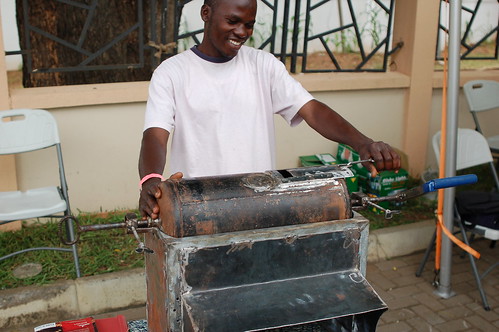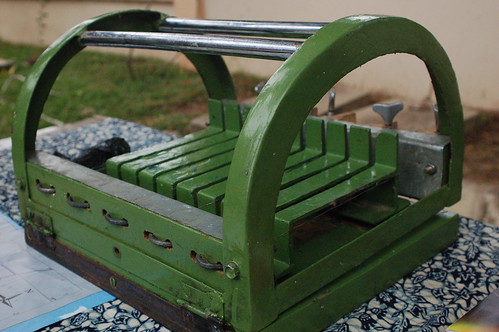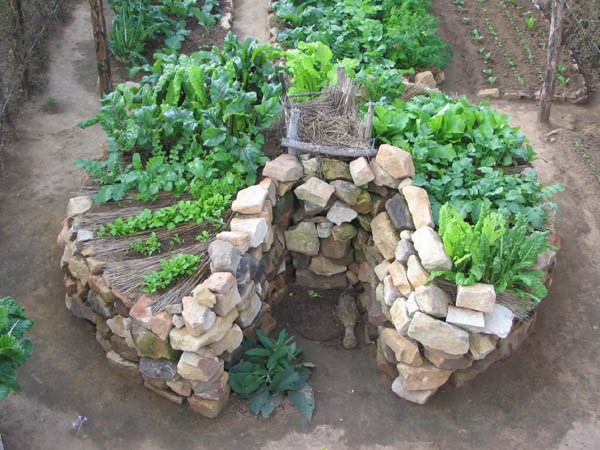This is a corn planter. It costs approximately $10 (15 Cedis) to make, and it significantly decreases the time that it would normally take to plant corn. This invention came about by taking a look a medical pill dispensing devices and transferring that knowledge to his communities needs.
Shamsudeen (“Sham”) Napara lives in the norther part of Ghana, which is a lot more rural and isolated than the southern part of the country where you find Accra, or the central part, where you find Kumasi. He has a metal fabrication shop where he builds tools, mostly for agricultural needs of those in the surrounding areas.
He was at Maker Faire Africa this weekend and I was completely amazed at both the ingenuity and the quality of his work.
Shea Nut Roaster
That’s not all that Sham has been up to though, in fact, he’s been busy with a couple other projects. Specifically, he’s been working with Amy Herman from the Univesity of Indiana to figure out how to enhance traditional processes familiar to those in Norther Ghana. This means he does a lot with Shea nuts and the processing of them. It is one of the few fields dominated by the women in the community, and a lucrative business, since the processing from raw to refined can net a good margin of profit.
Below is a shea nut roaster – a small version, since the large ones are the size of a table. It costs around $40 (60 Cedi), and it decreases the time and energy normally expended in the work of getting the nuts ready for processing.
Soap Cutter
Though he has many more inventions in his workshop in Northern Ghana, the last of the three items that he brought to Accra was a soap cutter. It’s a device that has a hinge on one end that opens and closes with piano wires and guitar screws to hold wire tight across the device. As it is closed, it slices the soap cleanly.








